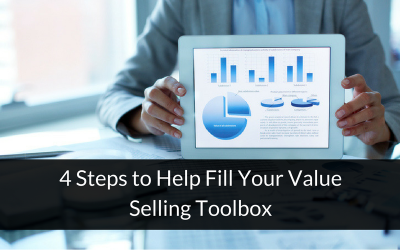
Buyers tend to take the same journey every time they make a high-commitment purchase. They realize there is a problem and begin researching potential solutions. Unfortunately, they are not always methodical in their search.

Buyers tend to take the same journey every time they make a high-commitment purchase. They realize there is a problem and begin researching potential solutions. Unfortunately, they are not always methodical in their search.

Nothing better makes the case for change in front of decision makers than showing the red ink on your buyer’s bottom line. A value calculator is a highly effective tool for displaying all of that red and identifying that it’s caused by a problem your product or service can solve.

B2B sales typically have long marketing and sales cycles due to the nature of the offering. Today’s buyers will put off talking to a sales representative as long as possible before finally committing to a first meeting.

Because an assessment tool is so engaging, it can be used at every step of the sales process. This versatile tool both evaluates and clarifies the prospect's problem at hand.

Traditional marketing wisdom tells us that building customer relationships begins with the sales process. Every product, company and industry has its own unique journey, and it’s our job as B2B solution providers to establish trust, credibility and value every step of the way.

As customer acquisition costs keep rising, savvy SaaS providers are focusing on retention to reduce their churn rates. An initial SaaS purchase is just the beginning of your relationship with a new customer. You must keep earning their loyalty to ensure high renewal rates and avoid financial and reputational damage.

How frequently do you use the term “ROI” in front of customers and potential buyers? I frequently hear sales and marketing professionals talk about “ROI” inaccurately. If you're having a serious conversation with someone who’s well versed in financial terminology, any misuse of the term could leave a disastrous impression about you and your company.

An RFP lands in your inbox. It’s from a company you would love to do business with. Your pipeline for the next two quarters isn’t as strong as it could be, and several of your biggest opportunities seem to be stuck in the dreaded “no decision” limbo.
Have you ever heard customers say, “I don’t believe these numbers,” while showing them the business case for your offering? It’s not that the customer thinks you’re a liar. The problem is that many customers come to the table with existing assumptions or prejudices around benefit dimensions. Therefore, your ROI estimates can seem like pipe dreams.

If you are shopping for an ROI tool, odds are that you already agree with us that a homegrown Excel tool won’t get you the best results. But how do you evaluate vendors and make the right choice? Here are four elements to consider.